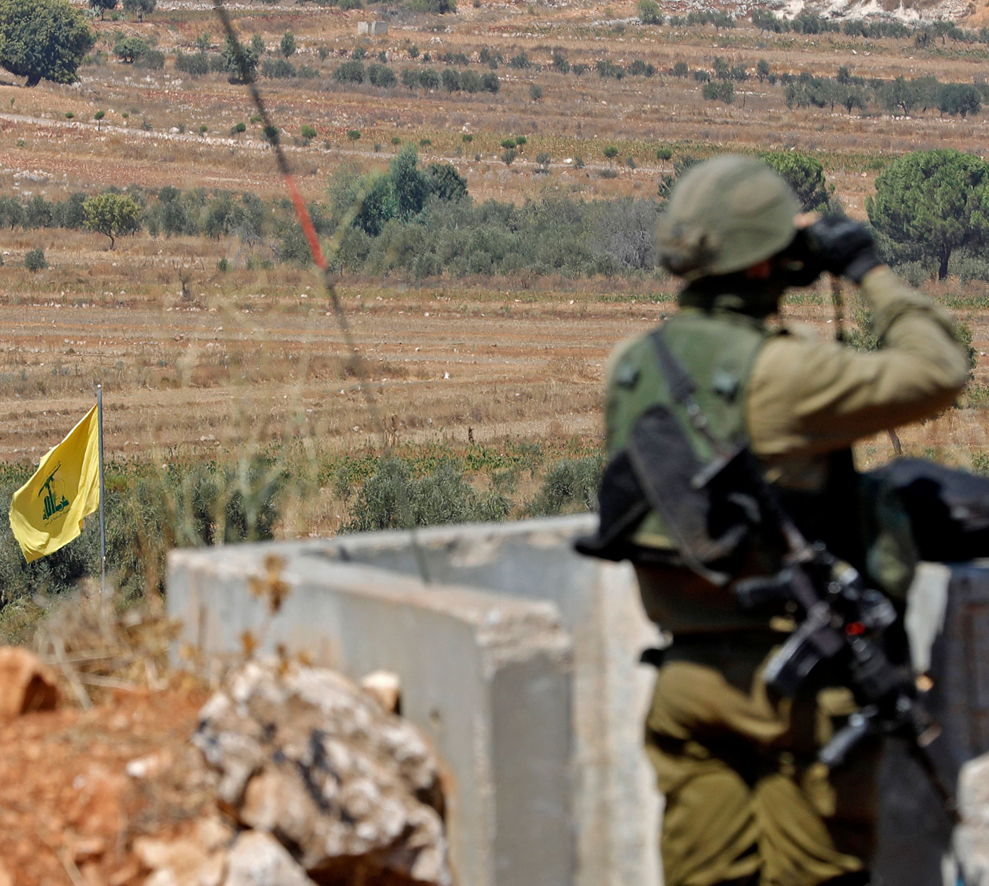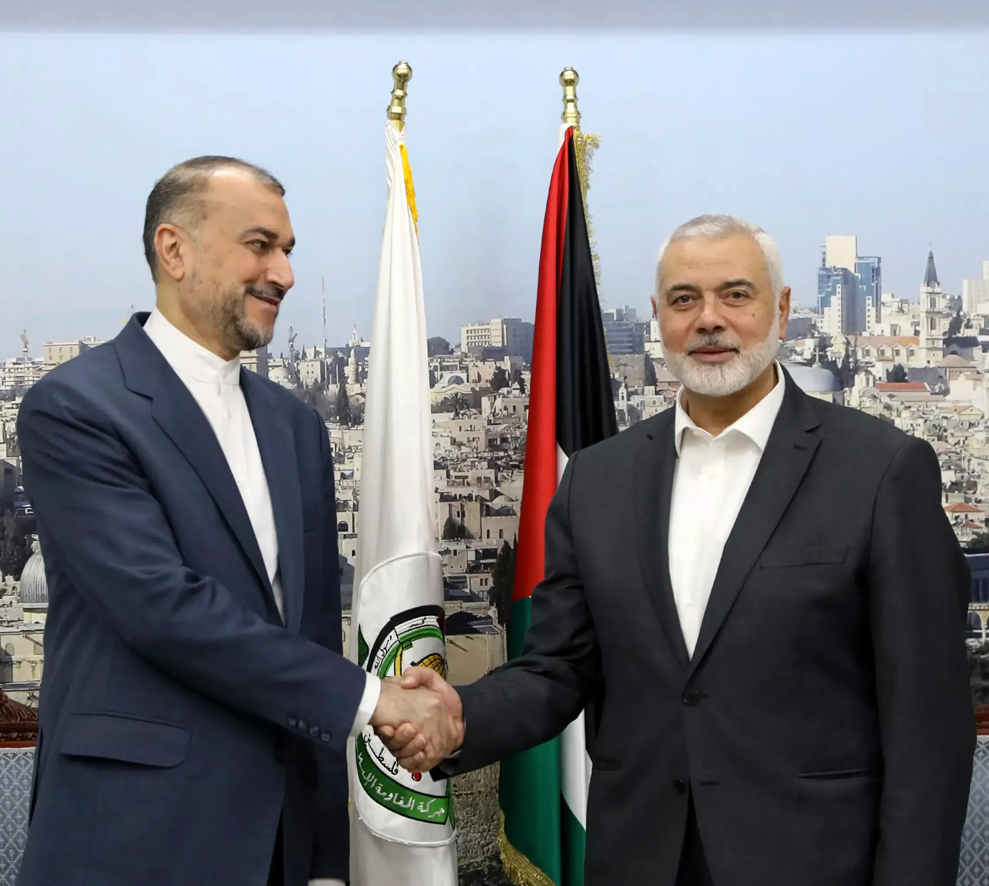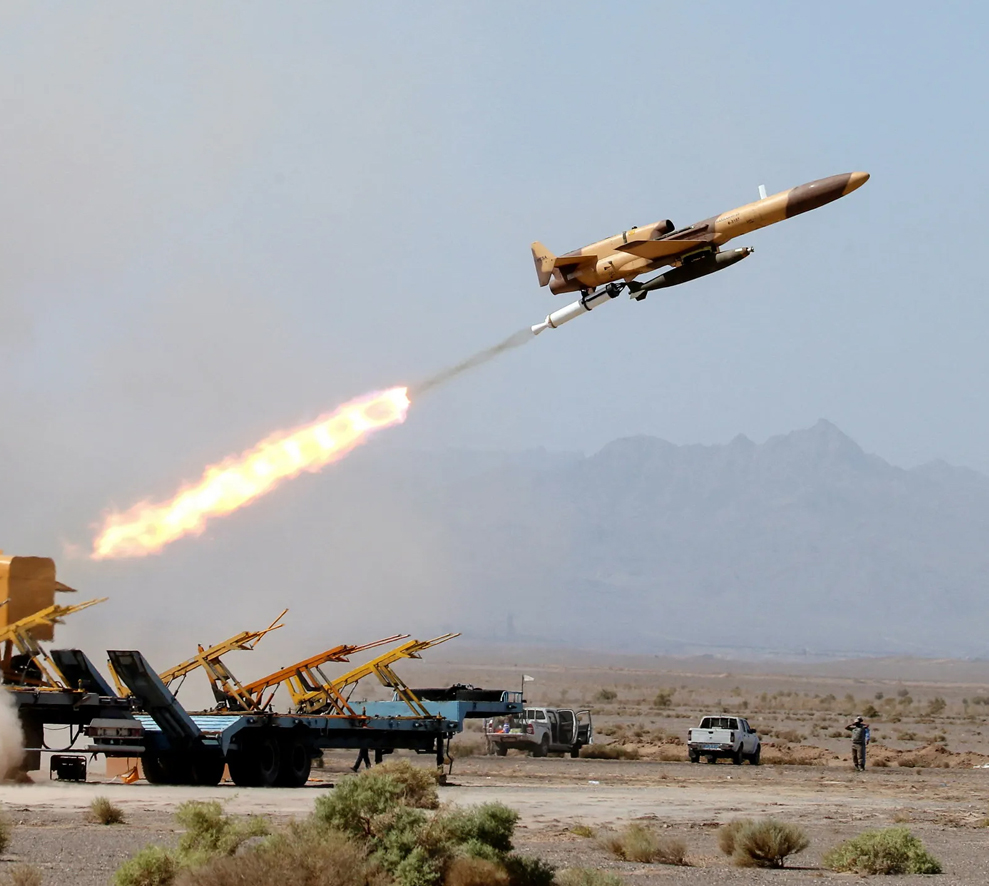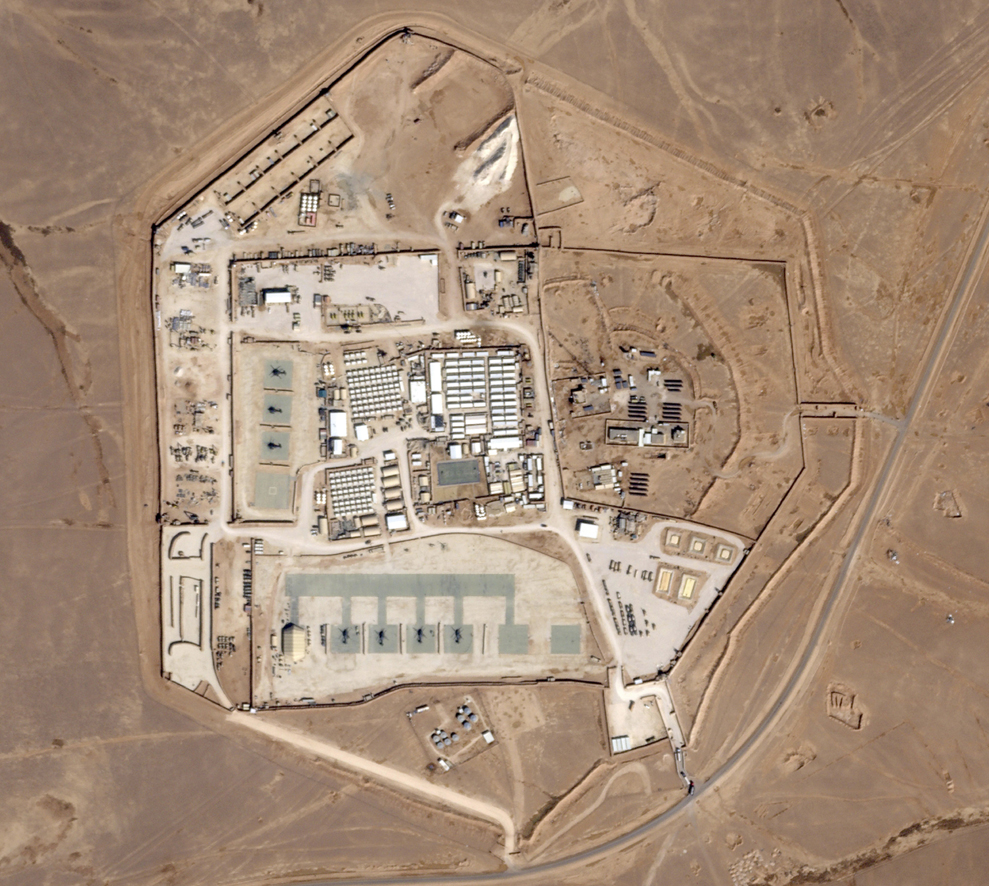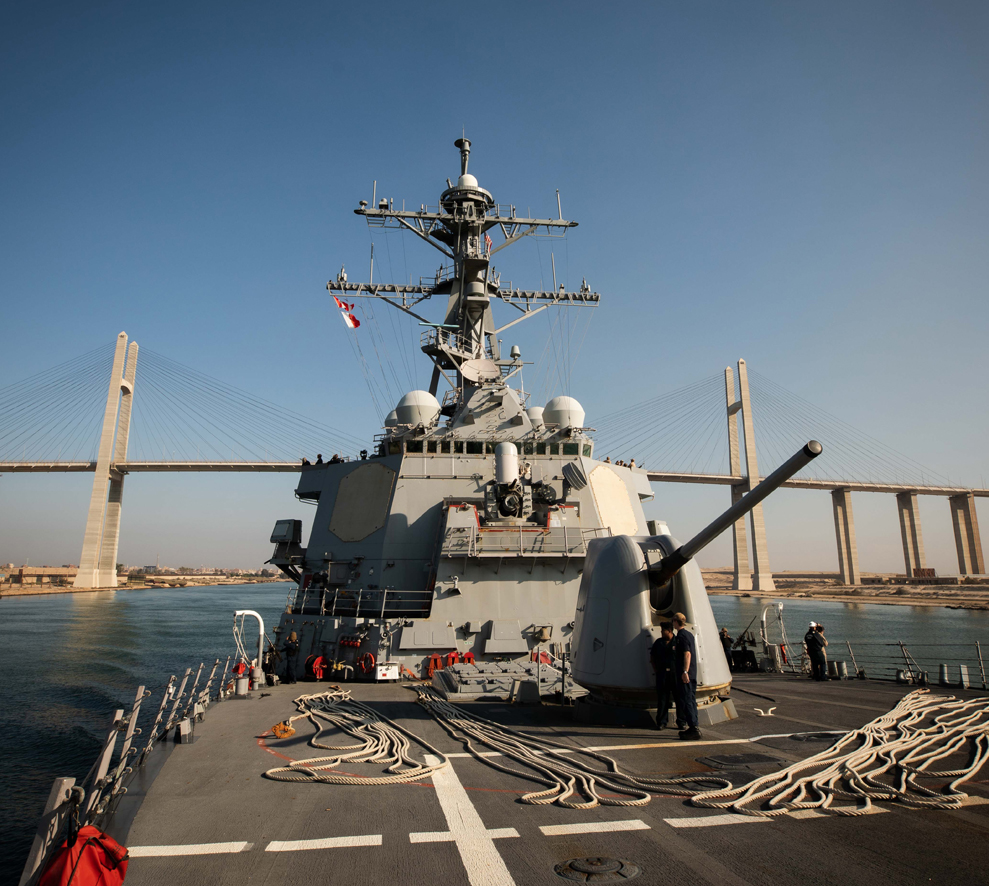Since the outbreak of the conflict between Hamas and Israel on October 7, the world’s attention has turned to Iran and its regional allies, particularly Hezbollah in Lebanon. There is a growing concern that Hamas’s attacks on settlements and military bases in Israel’s Otef Aza region (also called the Gaza Envelope) may be just the first stage of a broader plan that involves all components of the so-called “Axis of Resistance,” the anti-Israeli and anti-Western political and military coalition led by Iran. This also aligns with Iran’s strategy known as “The Unity of Arenas.”
Despite Iran’s denial of prior knowledge of or involvement in the attack, its officials and agents have consistently made threats and hinted at participating in and even escalating the conflict from its very beginning.
Axis of Resistance Positions Towards the War
The narratives of Iran and its allies on the ongoing conflict, whether in Gaza or surrounding areas, are similar. All such narratives rushed to bless the attacks Hamas carried out in Gaza Envelope areas. The escalation of war was accompanied with another escalation in Iran’s discourse—not only against Israel, but also against the Unites States as well, especially when America sent two of the world’s largest aircraft carriers to the Mediterranean Sea, which Iran regarded as a direct threat to its own security and interests.
Tehran and its allies have previously declared that they are ready to launch attacks against Israel and the United States, especially since the U.S. military is now directly involved into the war.
- Iran, through the United Nations, warned Israel of “far-reaching consequences” if it doesn’t end its “war crimes and genocide” in the Gaza Strip. After meeting with Hezbollah terror chief Hassan Nasrallah on Saturday, Iranian Foreign Affairs Minister Hossein Amir-Abdollahian announced “the possibility of a preemptive move by the resistance axis is expected in the coming hours.”
- Abdul-Malek al-Houthi, leader of the Ansarullah Movement in Yemen, threatened to launch drones and missiles if the United States interferes in the war. And the head of the government affiliated with the Houthis, Abdel-Aziz Habtour, threatened to target Israeli ships in the Red Sea.
- The Badr Organization in Iraq, which is a part of the Popular Mobilization Forces, threatened to target American interests. And the spokesman for Hezbollah Brigades in Iraq, Jaafar al-Husseini, also threatened all the American bases in Iraq.
And the attempts of Iran and its allies to prove how serious their threats are can be readily observed.
- The borders from southern Lebanon to the Syrian Quneitra witnessed a density in the spread of armed groups.
- Videos published by leaders of the Iraqi Popular Mobilization Forces revealed they are present in the area of Naqoura, situated in the far south of Lebanon on the border between Lebanon and Israel.
- Inside Syria, armed groups launched projectiles at least three times towards Israeli settlements in the Golan Heights. And attacks against American troops in Syria and Iraq were resumed after a relative calm had prevailed during the past months.
- Three U.S. military bases—Al-Tanf, Al-Rukban, and Al-Malikiya— in eastern Syria near the border with Iraq were attacked by drones loaded with explosives sent by the Islamic Resistance in Iraq, a new coalition of pro-Iranian militia groups. In the same context, the Pentagon’s announcement of intercepting cruise missiles and drones, believed to have been directed at Israel and launched by the Houthis in Yemen, came as a clear message of what the regional escalation would look like if the war continues.
Yet the pace of escalation the Lebanese-Israeli border is witnessing is the highest among others. Hezbollah is demonstrating seriousness in threatening Israel. Through a tactical self-restrained escalation, it is directly supporting Hamas by distracting the Israeli army in the northern front, seemingly attempting to affect Israel’s thoughts on land invasion. Moreover, Hezbollah’s actions are ensuring the war is a main event on the international and regional levels as well as keeping the northern front in a status of ambiguity.
To that end, Hezbollah neutralized the Israeli military intelligence communications by destroying many electronic surveillance sites containing cameras and radars, prompting Israeli intelligence, according to military reports, to rely on drones to continue monitoring the Israeli-Lebanese border closely.
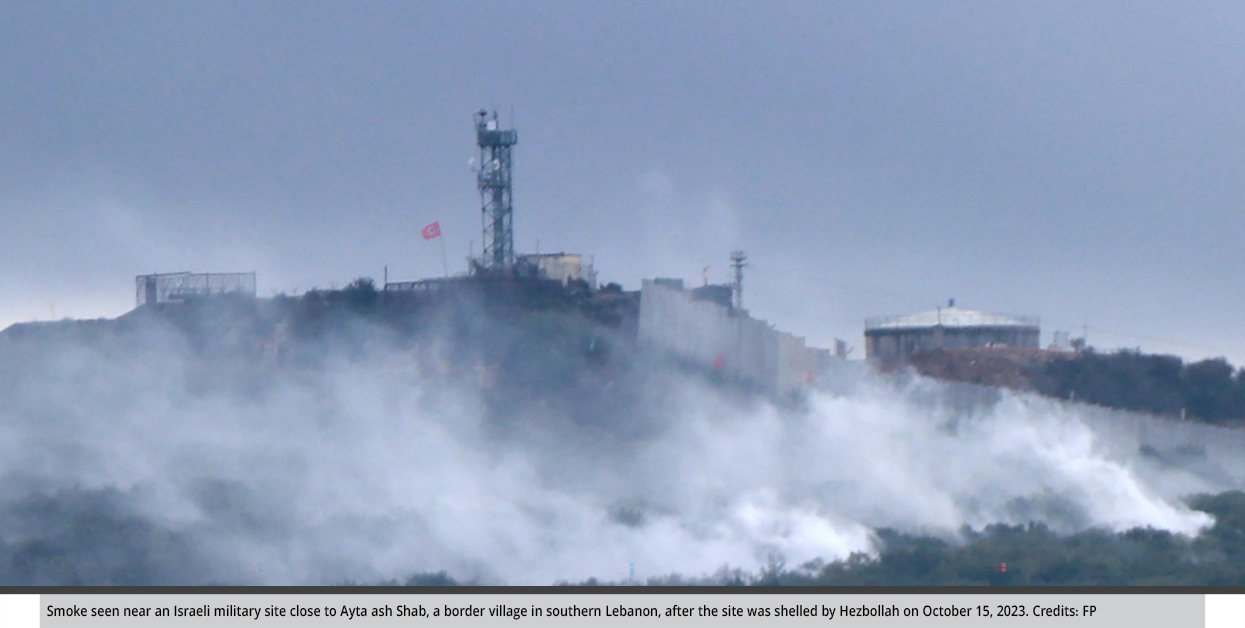
Axis of Resistance Tracks of Escalation and Participation
The position declared by Iran and its allies still ranges between media and rhetorical threat on a hand, and self-restrained tactical escalation on the other hand, however, Iran and all components of so-called “Axis of Resistance” are directly involved in the ongoing war in Gaza. Considering the changing nature of this war and the intensity of its daily events, the calculations of Iran and its allies regarding the war are subject to change, and are at a crossroads between escalation or calm. should the war pose an existential threat to the factions in the Gaza Strip, this may lead Hezbollah and other groups of the Axis to expand their engagement, which may lead to the outbreak of conflict all fronts on a regional war. This possibility might be dismissed if the war comes to an end, or if its intensity would decrease, or if the Palestinian factions carried take new unexpected actions against the Israeli army in ground battles (if any). In general, the issue of expanding fronts is subject to three paths, which are:
Track One: Keeping the Participation in War Tactical and Self-Restraint
Maintaining the status quo since the outbreak of the war until now, was made by the limited targeting operations of Hezbollah, by which it attacks Israeli settlements and military sites, keeping meanwhile a supportive role for the Palestinian factions in Lebanon, enabling them to carry out operations against Israel, whether by launching rockets or attempting to infiltrate. This means maintaining the scope of the current confrontation front between Hezbollah and Israel, which extends along the distance from Naqoura to Kfar Shouba.
This track of participation is considered a fait accompli for Hezbollah, in light of the domestic and international constraints that limit its involvement in the war, foremost of which is that the Lebanese state is going through a severe economic crisis, whereby Lebanon may not be able to bear any destruction that affects its infrastructure or service facilities, in addition to that many Lebanese political currents do not stop warning of the danger of engaging in a war that is not Lebanese in the first place, especially since Lebanon and Israel have recently made an achievement in signing a document of agreement to demarcate the maritime borders, which allows Beirut to begin petroleum and gas exploration in the Qana natural gas marine field in the eastern Mediterranean.
On the other hand, the indicators regarding Iran indicate its intention to maintain a low level of escalation, especially since its military “symbols” are still invisible in the scene, foremost among them are Ismail Qaani, commander of the Quds Force of the Iranian Revolutionary Guard, and Hassan Nasrallah, secretary-general of Hezbollah. Most of the statements and threats came from the Iranian foreign minister, typically containing ideological contents the world is accustomed to hearing since 1979. They are a message to world and the region’s countries that Tehran is adopting a diplomatic approach by pushing the foreign minister to dominate the scene. Thus, the resort of Iran and its allies to exert pressure on the United States, Israel, and neighboring countries, include rhetorical escalation, demonstrations, and sit-ins, such as the sit-in of hundreds of supporters of the Popular Mobilization Forces at the Iraqi-Jordanian border, demanding an to put an end to the war and bringing aid to the Gaza Strip.
Track Two: The Increase of Escalation on the Frontlines
The self-restrained tactical escalation that Hezbollah is practicing, and the reinforcements that the Naqoura area in the Golan are witnessing, may lead to a wide conflict along the frontline; i.e., the direct contact lines between Israel and the Iran-supported armed groups, whether in the West Bank, Lebanon, or Syria. The scope of the conflict is likely to expand in light of three main possibilities, which are:
- land intervention in the Gaza Strip.
- increasing the pressure to displace the population of Gaza, thus pushing them towards Egypt.
- creating an existential threat to Hamas.
Even one of those possibilities would raise the level of escalation from a self-restrained level to a state of wide conflict. The rapid developments which are witnessed by the Lebanese-Israeli border can be observed, including the Israeli government evacuation of 14 new settlements on the border, bringing the total number of settlements decided to evacuate to 43 settlements. The announcement of the Israeli army that the border with Lebanon is a closed military area that extends up to a depth of 4 kilometers inside Israel—in addition to a noticeable increase in attacks carried out by Hezbollah and the response to such attacks by the Israeli army, a continuous barrage of “tit-for-tat” clashes—keep the situation more prone to escalation than to an open war.
Among the latest indicators on the Palestinian and Lebanese unity of arenas in the ongoing war is Hezbollah’s announcement of a meeting between its Secretary-General Hassan Nasrallah, Ziad Nakhaleh, the secretary-general of the Palestinian Islamic Jihad movement, and Saleh al-Arouri, deputy head of the political bureau of Hamas, The meeting indicates that the three parties have entered a stage of joint and public coordination.
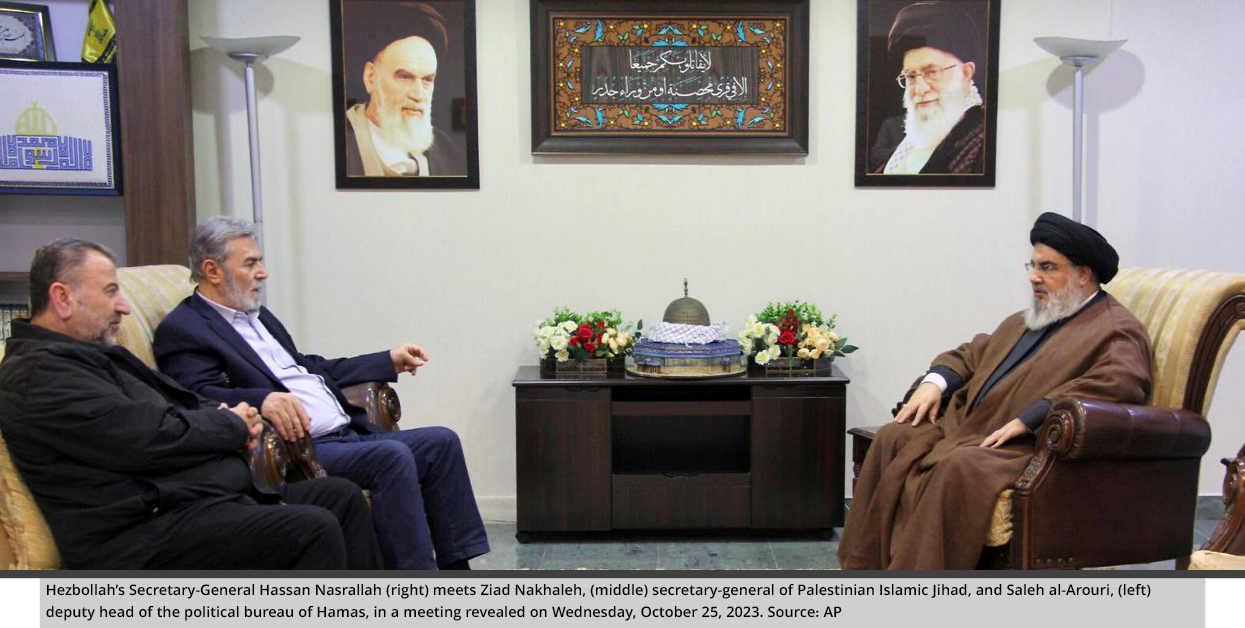
In addition, the risks of escalation are transferred to the Syrian arena, specifically in the vicinity of the Golan Heights. Data indicates that Tehran is redeploying its allied armed factions in Syria, while field reports indicated that members of Hezbollah are stationed in military sites northwest of Daraa and in the Quneitra governorate, receiving reinforcements that included drones and Fajr missiles that are made in Iran.
What clarifies Israel’s concern about the Iranian movements in Syria is Tel Aviv’s targeting and neutralizing both the Aleppo and Damascus airports for the third time since the outbreak of the war. Unusually, Israel claimed its responsibility for “destroying” Aleppo International Airport on October 14. Maj. Gen. Herzl “Herzi” Halevi, commander of the Israel Defense Forces, blamed Iran for pushing Israel to target Syrian lands.
It is true that this possibility raises the scale of the war, but it keeps it below the threshold of regional conflict, a scenario that may be acceptable for Iran since it avoids direct engagement and may not require direct U.S. intervention in the war. At the same time, this possibility satisfies the expectations of Hamas and Palestinian Islamic Jihad, and the demands of public opinion towards what is called the Axis of Resistance.
Track Three: Applying the Unity of Arenas and the Outbreak of a Regional War
Applying the ‘Unity of Arenas’ in the ongoing conflict is deemed the most detrimental scenario, due to what the course of the ongoing war in Gaza and its surroundings may become, because this scenario means extending the conflict from a narrow geographical scope to the wider region. Raising this possibility is likely assuming that Iran had planned Hamas attacks from the beginning, placing such attacks within a wider strategy to normalize its strategy called “Unity of Arenas”, it also means that there are other stages to come, as well as new gradually-expanding fronts parallel to the field data of the war.
Since the inception of the current war, any viewer of the Iranian or its allies’ media platforms realizes their joint attempts to indicate their close involvement or prior knowledge of the attacks. Some of the said media platforms published exclusive information and images of facilities inside Israel that were targeted by the attacks. However, it is difficult to verify the credibility of these information and images, as neither Hamas nor Israel disclosed information about them. These platforms always aim to send encrypted messages, warning of surprises to come, and new fronts.
On the other hand, an observer of Iran or one of its allies’ media platforms notices that these platforms have recently unified their names used for the factions fighting in the war. To wit, they call Hamas and Hezbollah movements “the Islamic Resistance.” Meanwhile, a new faction was formed in Iraq under the name “the Islamic Resistance in Iraq,” which claims responsibility of most of the attacks against the American forces. The latter faction can be considered a joint operations for all the armed factions in Iraq and Syria since the attacks it carries out are a joint effort of all those factions.
Whether these messages are part of a psychological warfare or something else, one thing is clear: There is a proportionality between the escalation of threats and the execution of attacks against Israel and the United States. The scope of operations has indeed expanded to include not only Lebanon but also both Yemen and Iraq. This may indicate that Iran is preparing its various fields for wider engagement in which Iran will fully participate. This suggests that Iran has begun serious steps on its way to unify the arenas by unifying its various factions under one operational reference.
Finally, the Unity of the Arenas means coordinating the roles between all the Iran- supported armed factions in various fronts, whether in Lebanon, Iraq, Yemen, or Syria. While the Houthis launched their first attack, and as some new entities in Iraq continue to attack American targets, their roles are still limited to support without full engagement in the war. This has wide implications, not only for those factions but also for their countries, especially since many of them are part of the official state structures, such as the Popular Mobilization Forces that are part of the official forces of Iraq. Therefore, a newly created entity called the Islamic Resistance in Iraq is engaged to protect the Iran-supported factions from legal accountability or receiving military counterattacks.
As for the context of comprehensive warfare and the end of self-restrained tactical phases, observers may overlook the elephant in the room, perceiving the war as a black swan scenario in which all parties are striving not to slide down to an open war.
Keep in touch
In-depth analyses delivered weekly.

Related Analyses:







